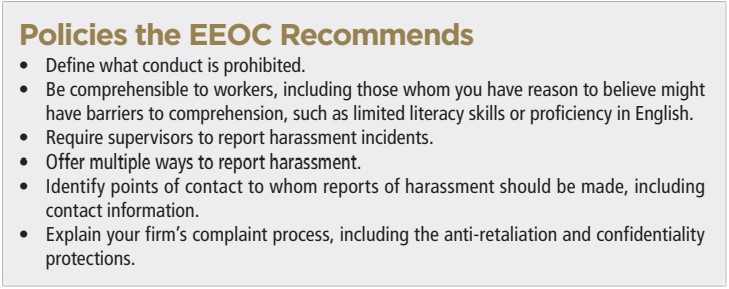July 2024 – New Rulemaking – EEOC Issues Updated Workplace Harassment Guidance

THE EQUAL Employment Opportunity Commission has issued updated workplace harassment guidance for employers, increasing possible exposure to employee-initiated lawsuits.
These are federal guidelines, meaning that they open a new avenue for potential employment practices liability exposure. Employers should understand this new guidance to ensure they don’t run afoul of the law and risk being sued by a worker.
The guidance includes the following:
Sex-based harassment
The guidance expands the definition of sex-based harassment to include harassment related to breastfeeding, morning sickness, contraception and decisions to obtain — or not obtain — an abortion.
It also expands protections to include harassment based on sexual orientation and gender identity.
An example of the latter would be an employer intentionally and repeatedly using a name or pronoun that is inconsistent with the worker’s gender identity, or denying access to bathrooms that are consistent with their identity.
Virtual harassment
The guidance states that harassment can occur in the “virtual work environment,” such as through the firm’s e-mail system, electronic bulletin boards, instant message systems, videoconferencing technology, intranet or official social media accounts.
The EEOC stated that while off-duty offensive social media posts sent on work systems generally don’t constitute harassment, they may if they impact the workplace, such as if the postings are directed at a particular employee or employer and are referenced at work.
The agency also stated that even if offensive material is sent while off-duty on non-work systems, like using personal phones or tablets to text harassing messages or making derogatory posts on their own social media accounts, it could be considered illegal.
The takeaway
The EEOC has designated workplace harassment as an enforcement priority.
You should update your anti-harassment policies and procedures in your employee handbooks to reflect the changes to EEOC guidance. Managers and supervisors should be trained in the new guidance as well.


